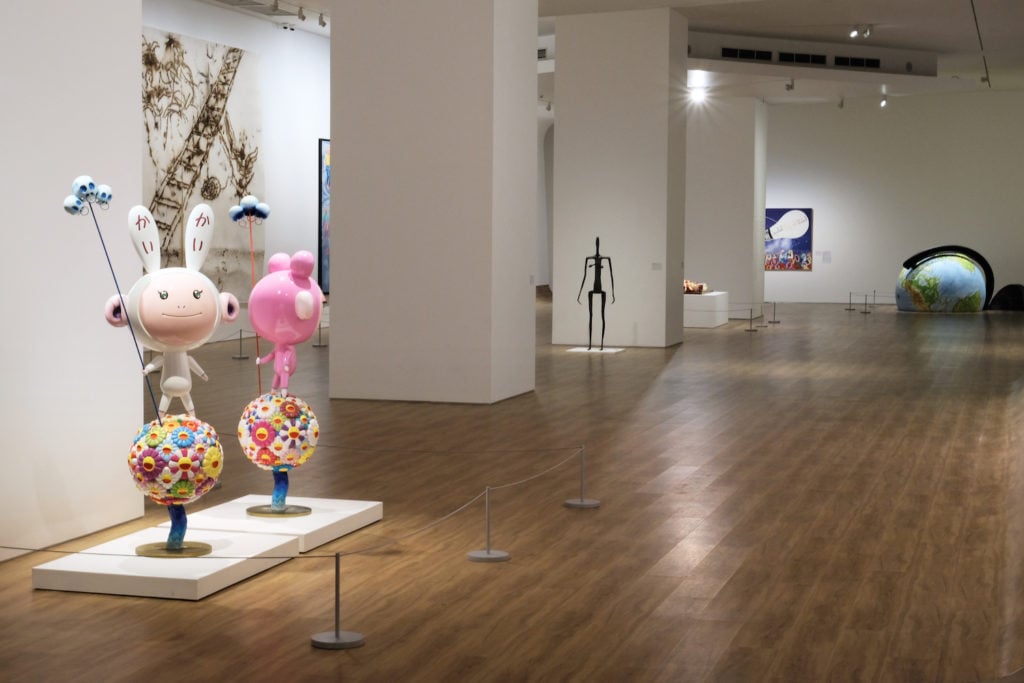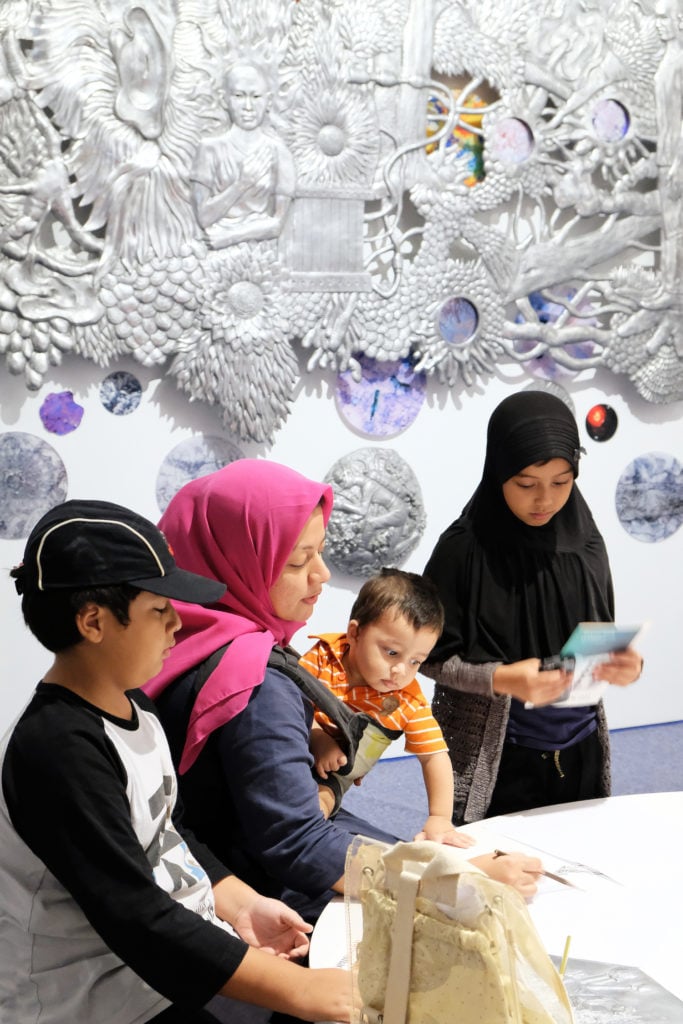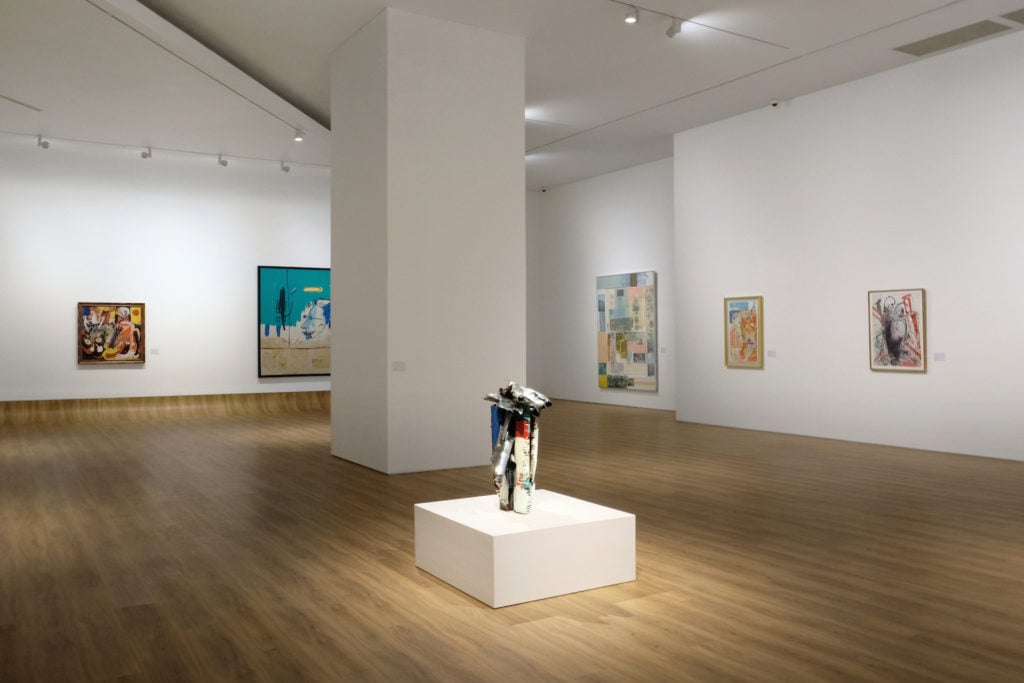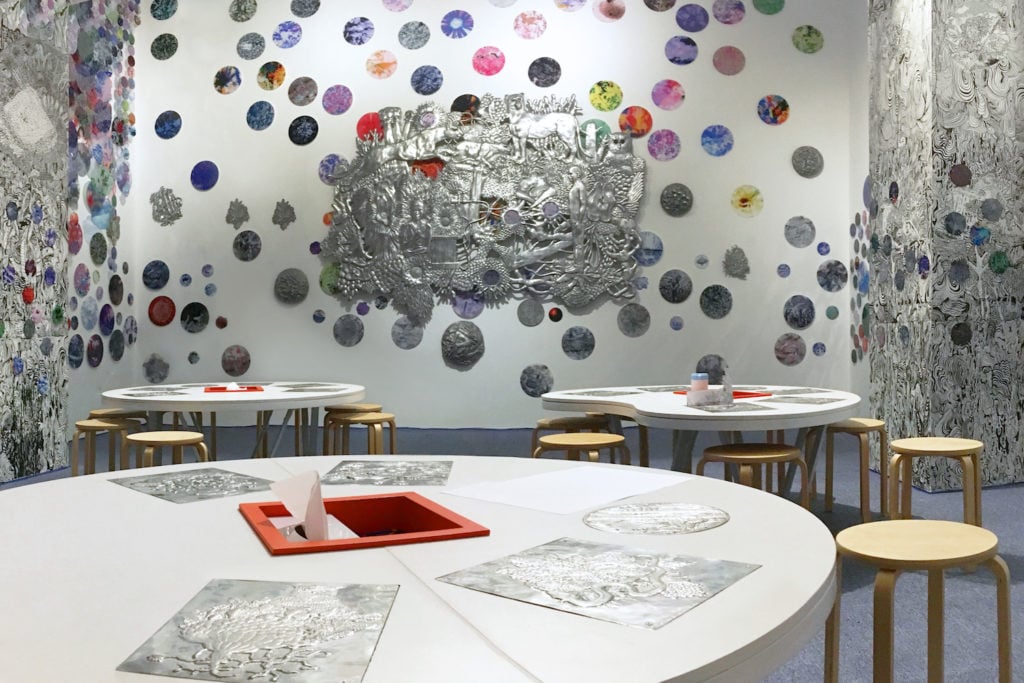On View
See Inside Museum MACAN, Indonesia’s First Modern and Contemporary Art Museum
The institution was founded by collector Haryanto Adikoesoemo.

The institution was founded by collector Haryanto Adikoesoemo.

Sarah Cascone

A long-awaited private museum, the Museum of Modern and Contemporary Art in Nusantara—Museum MACAN for short—finally opened its doors in Jakarta over the weekend. Founded by Indonesian philanthropist and art collector Haryanto Adikoesoemo and in the works since 2013, it is the country’s first modern and contemporary art museum.
The museum was originally scheduled to be completed in March, but was delayed until the fall to coincide with Jakarta Biennale and Biennale Jogja, two of the most significant art events in a country with a significant number of private collectors but minimal museum infrastructure.
Located on the fifth floor of a tower built by ARKdesign, the museum’s interiors have been designed by London-based firm MET Studio Design Ltd. (The museum’s long full name includes Nusantara, the name for the Indonesian archipelago in Javanese, while its abbreviation, MACAN, is the Javanese word for tiger.)
The inaugural show, which opened on November 4, brings together 90 works by 70 Indonesian and international artists. There will be much more to see as additional works come out of storage: The museum’s founder, a property developer and the president of chemical and energy logistics company PT AKR Corporindo, has amassed a collection of 800 works of American, European, and Asian art.
The debut exhibition “is the first public unveiling of an extraordinary collection developed over two decades by our founder,” the museum’s director Aaron Seeto told artnet News. (Seeto, the former curatorial manager of Asian and Pacific art at the Queensland Art Gallery in Australia, took over in November 2016 following the sudden departure of Thomas J. Berghuis.) He noted that the show “offers a reading of Indonesian art history in dialogue with world art history, and highlights the breadth and depth of the collection.”
Big names like Jeff Koons, Robert Rauschenberg, Gerhard Richter, Andy Warhol, and Yayoi Kusuma are represented, but the exhibition gives equal airtime to the work of Indonesian artists, who have received comparatively little exposure on the international level. Among those showcased are FX Harsono, Heri Dono, Kusama Affandi, and Raden Salèh Sarief Bustaman, who is considered the father of modern Indonesian painting.

Installation view of the Global Soup section of “Art Turns. World Turns: Exploring the Collection of Museum MACAN.” Photo courtesy of Museum MACAN.
Organized by Indonesian curator Agung Hujatnika and Charles Esche, director of the Netherlands’s Van Abbemuseum and curator of the 2015 Jakarta Biennial, the inaugural exhibition shows how Indonesian artists were influenced by the nation’s history as a Dutch colony. The country declared independence in 1945, and much of the art on view reflects Indonesia’s multi-ethnic and racial makeup, its struggle for nationhood, constructions of exoticism, the influence of colonial powers, and the rise of globalism.
Among those featured is Indonesian artist Arahmaiani Feisal, whose painting Lingga-Yoni depicts Arabic lettering with the Hindu symbols for the male and female genitalia. The work is on display for the first time since she fled to Australia due to death threats from Islamic fundamentalists.
When Feisal learned that the painting, meant to represent the multiculturalism of her native Java, had been purchased by the Museum MACAN, “I thought no, that is not possible,” she told the Sydney Morning Herald. “The work has very deep meaning for me, although it is also quite traumatic. I don’t how to explain.”
Lingga-Yoni is a key example of the strengths of the Museum MACAN’s collection. “Because of its geographical range, we can begin to draw out comparisons between what was going on here alongside the interests and activities of artists around the world,” Seeto told the National. It is possible to illustrate, he notes, artists’ various reactions to the postwar experience in America, Europe, Japan and Korea.
The museum also debuted a new commission from leading Indonesian artist Entang Wiharso in its Children’s Art Space. Titled Floating Gardens, the piece will provide the backdrop for educational programming.

Children’s Art Space Entang Wiharso commission, Floating Garden (2017) at the Museum MACAN. Photo courtesy of Museum MACAN.
Museum MACAN is part of a growing trend, perhaps nowhere as popular as in Asia, of ultra-rich collectors opening their own private museums. According to a survey of private museums by Larry’s List released last January, another Asian country—South Korea—has the most private museums of anywhere in the world. (Jakarta’s first, Budi Tek’s Yuz Museum, closed in 2014 as the collector turned his attention to a new museum venture in Shanghai.)
“The private sector,” Seeto told the Herald, “has taken up a lot of the conversations that we in the West would expect the public sector to do.”
See more photos of the new museum and its collection below.

Installation view of the Struggles Around Form and Content section of “Art Turns. World Turns: Exploring the Collection of
Museum MACAN.” Photo courtesy of Museum MACAN.

Children’s Art Space Entang Wiharso commission, Floating Garden (2017) at the Museum MACAN. Photo courtesy of
Museum MACAN.

Installation view of the Global Soup section of “Art Turns. World Turns: Exploring the Collection of
Museum MACAN.” Photo courtesy of Museum MACAN.
“Art Turns, World Turns: Exploring the Collection of the Museum of Modern and Contemporary Art in Nusantara” is on view at the Museum of Modern and Contemporary Art in Nusantara November 4, 2017–March 18, 2018.